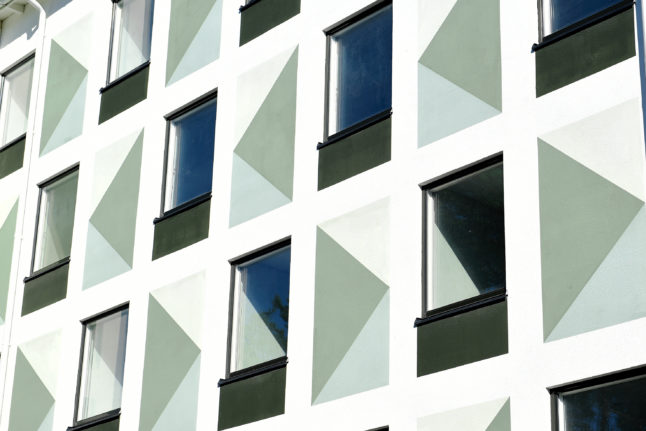The housing squeeze follows a few years of temporary relief during the pandemic, when more students were studying remotely and not moving to their university towns and cities. But according to the annual housing report from the Swedish National Union of Students (SFS), as on-campus studies have returned to pre-pandemic levels, so have student housing shortages.
Of the 34 university or college locations where SFS maps the student housing situation, six areas received a worse result in this year’s report than it did last year.
The changes are tracked using a colour-coded system: green means students can receive an offer of accommodation within a month, yellow means that an offer comes within a semester, and red means a housing offer takes more than one semester. The report found that 61 percent of students live in a city that has been designated a red ranking.
International students are not insulated from this shortage. Hülya Bakca, a Turkish woman studying at Lund University, cancelled her student housing in Malmö, which she received through the university’s accommodation provider.
She had moved to Malmö late, because her classes in the first half of the autumn 2021 semester were online, and she could not afford to pay rent for an apartment she was not using. While she then found a room in an apartment shared with two other people, she said her rent, at 5,400 kronor, not including wifi, is too high.
“I have the smallest room,” she told The Local. “The room is facing a busy road and it is noisy. I am not happy about it.”
There is no privacy, she added, as insulation problems mean that sounds from both outside and inside the apartment are audible, while the landlady lets herself in whenever she wants without prior warning.
Bakca tried looking for a new place to live in the summer, when she expected it to be easier to search for an apartment as students left Lund and Malmö. She looked once more for shared accommodation to lower her costs. One apartment was covered in the toys of the prospective flatmate’s child.
“All the shared place was just his kid’s toys and stuff,” she said. “It was everywhere, you could just step on it. Legos, dolls.” Rent was 5,000 SEK, and did not include electricity.
Another potential flatmate was an older man, whose living room was strewn with alcohol bottles, and who told Bakca about his previous tenants, including a 19-year-old woman and a 25-year-old-woman. Rent here was 4,500 SEK, all included.
After months of searching, Bakca gave up on her housing search, and now plans to move in with her partner when her current lease expires.
According to the report, student housing across Sweden was converted into other types of housing during the pandemic, when demand for student accommodation dipped. Rising construction costs are also contributing to the student housing shortage, as is the removal of governmental support for the creation of low-cost housing.
Meanwhile, a secondary housing market, in which first-hand leaseholders sublet their housing, pushes up rental costs further, eating into students’ already tight budgets.
As well as a housing shortage, students are also facing high rents.
“Students are among the societal groups who spend the highest share of their income, about half, on housing costs,” the report found.
This year’s downgraded locations include Borås, Jönköping, and Eskilstuna, which have gone from green to yellow, and, Karlskrona, Malmö, and Uppsala which have gone from yellow to red. Lund, Gothenburg, and Stockholm have never received anything but a red rating since 2009, even during the pandemic, highlighting a persistent lack of housing in the three cities, all of which are popular destinations for international students.
In its report, SFS demands action to address the housing shortage. This call for action is divided into three points: a reintroduction of government subsidies for new construction, a reform of housing allowances for students, and more streamlined checks to ensure that student housing is allocated to active students.




 Please whitelist us to continue reading.
Please whitelist us to continue reading.
Member comments